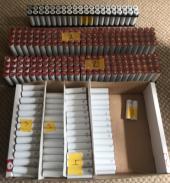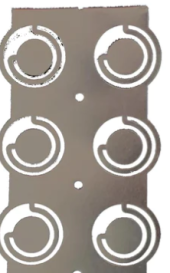Modular Hippo
New Member
Hi Forum,
Yep, beginner hence this thread Category
Designing (only on paper so far) a setup where I can drive my boat on solar and use sun/wind to charge my battery bank.
I have my eyes on 2 potential motors (both rated at PEAK CURRENT 400 Amp):
LEM 200 - 95
LMC Marlin - Single Drive System
I am trying to translate the '400 Amp' in to what that means to my choice of BMS and Cabeling to make sure I only have what I potentially need (as costly components).
Forgive my lack of knowledge in the area but are we saying that if you want to drive this motor on 'full speed' you have to provide '400 amp'. In other words, if I had a '200 AMP' BMS and cabling then I could only drive the engine on half max speed (as if go above this I will blow my fuses)?
I have seen examples where user with a similar setup (10 Kwh motor) say 'My BMS' supports '100 Amp' as I do not foresee myself drawing anything above this from the motor'. Someone else mentioned something similar configuration but 200 Amp BMS and cabling... A bit confusing as to what they base this on. Maybe you never drive engine on full and instead use gear ratio to make use of torque to get good RPM against very little Amp input? If so what would that Amp input be?
I guess my question is - What amperage BMS & Cabling would you normally have for a setup like this? Fully understand if what I have provided cannot be used to calculate this but thought I make a start. Might get the right questions back to help me figure it out
Fully understand if what I have provided cannot be used to calculate this but thought I make a start. Might get the right questions back to help me figure it out
Any feedback that can help me crack this mystery highly appreciated
Thanks
Modular Hippo
Yep, beginner hence this thread Category
Designing (only on paper so far) a setup where I can drive my boat on solar and use sun/wind to charge my battery bank.
I have my eyes on 2 potential motors (both rated at PEAK CURRENT 400 Amp):
LEM 200 - 95
LMC Marlin - Single Drive System
I am trying to translate the '400 Amp' in to what that means to my choice of BMS and Cabeling to make sure I only have what I potentially need (as costly components).
Forgive my lack of knowledge in the area but are we saying that if you want to drive this motor on 'full speed' you have to provide '400 amp'. In other words, if I had a '200 AMP' BMS and cabling then I could only drive the engine on half max speed (as if go above this I will blow my fuses)?
I have seen examples where user with a similar setup (10 Kwh motor) say 'My BMS' supports '100 Amp' as I do not foresee myself drawing anything above this from the motor'. Someone else mentioned something similar configuration but 200 Amp BMS and cabling... A bit confusing as to what they base this on. Maybe you never drive engine on full and instead use gear ratio to make use of torque to get good RPM against very little Amp input? If so what would that Amp input be?
I guess my question is - What amperage BMS & Cabling would you normally have for a setup like this?
Any feedback that can help me crack this mystery highly appreciated
Thanks
Modular Hippo




